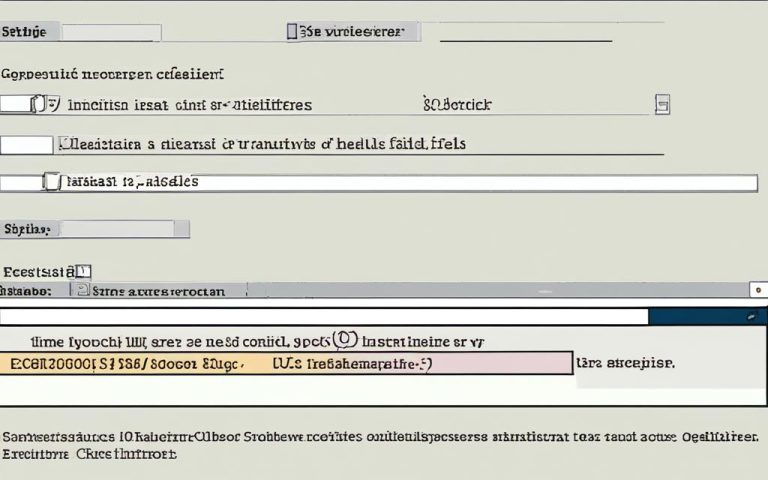A hash is like a digital fingerprint for documents or data. It’s made using a cryptographic function. This compares data to a previous hash. This helps check if the data is real and unchanged.
Different hash functions are used in blockchain. Functions like SHA-256, MD5, RIPEMD-160, and CRC32 help keep data safe and unchanged. They are chosen for their security features.
Hashing makes sure our data stays safe. It lets us compare and check data easily. And, it helps with quick data handling.
Hash functions have many uses, like keeping data secure. They help with digital signatures and making data secure. They keep data real, untouched, and safe on the blockchain.
Functions like SHA-256 are super secure. Miners use SHA-256 to add new blocks and check transactions. They get 6.25 BTC for each block, which helps keep Bitcoin safe.
Functions like RIPEMD-160 and SHA-256 make unique wallet addresses. They also keep smart contract data private. This helps with security and ensures contract authenticity.
Hash functions can’t be reversed. This means you can’t get back the original data, making things more secure. They’re key for online safety, protecting passwords, spotting data problems, and checking file safety. Hashes are crucial for blockchain’s safety and its decentralized nature.
How Do Hash Functions Work?
A hash function is key in many security systems, like blockchain. It makes sure data stays unchanged, secure, and cannot be tampered with. Let’s look into what makes hash functions tick.
A hash function converts any length of input into a fixed size output, called the hash value. This transformation is known as hashing. Inputs can vary from text and numbers to binary files.
The main goal of a hash function is to generate a unique mark of the input. It does this by performing complex math on the input. The output is a string that looks random, hiding the original input.
Hash functions need to avoid collisions, where different inputs give the same output. A tiny change in the input causes a big change in the output. This keeps blockchain data accurate, as any alteration changes the hash value.
Hash functions also have preimage resistance. It’s tough to work backward from a hash value to the original input. This keeps blockchain transactions safe and private.
The avalanche effect means small input changes lead to big output changes. This makes the hash value unpredictable and enhances security.
Regardless of input size, hash functions give a fixed-length output. This makes storing and finding hash values easy and consistent in blockchains.
Understanding hash functions shows their importance in blockchain. They ensure data security through their unique features, including collision resistance, preimage resistance, and the avalanche effect.
Example Use Case: Password Storage
In password storage, hash functions protect passwords. Instead of storing actual passwords, systems hash them. This hash value is then saved.
When logging in, the system hashes the entered password and checks it against the stored one. If they match, access is granted. This way, even in a data breach, passwords stay safe.
| Advantages of Hash Functions | Disadvantages of Hash Functions |
|---|---|
|
|
The Importance of Hashes in Blockchain
Hashes are key to blockchain security and its core functions. They help in making the data secure, trustworthy, and decentralized.
The Merkle tree uses hashes to create a digital ‘fingerprint’ for data sets or transactions. This fingerprint is stored in a block, ensuring all transactions are unchanged and secure.
Hashes also play a major role in proof of work. Miners try to solve a puzzle to create a special hash value. This shows they’ve done the work needed to add a block to the chain.
In digital signatures, hashes validate the data’s authenticity and integrity. Every block links to the previous one through hashes. If any data changes, the hash changes too, protecting the blockchain from tampering.
With hashes, blockchain gets its secure, trustworthy, and decentralized features. This opens up many possibilities in different sectors, showing how revolutionary blockchain is.
FAQ
What is a hash in blockchain technology?
In blockchain, a hash is like a digital fingerprint of data. It’s made using a special math function. This function takes a bunch of data and makes a unique code.
This code checks if data is real or if someone changed it. It makes sure everything is as it should be.
How do hash functions work?
Hash functions take any amount of data and turn it into a short, fixed code. They mix the data using math. This makes a unique code that matches the data.
If the data changes a little bit, the code changes a lot. Special types of hash functions, like SHA-256, are super secure. They prevent guessing the data from the code.
What is the importance of hashes in blockchain?
Hashes keep blockchain secure and true. They are used in many ways. For example, they group transactions into a Merkle tree and make a single hash for it.
This hash goes on the block, proving the transactions haven’t been messed with. Miners also use hashes to help add new blocks to the chain.
Hashes are key for digital signatures, showing data is real and not tampered with. Each block’s hash is linked to the last one, making a secure chain. This stops anyone from changing old blocks. Thus, hashes are the backbone of blockchain’s security and trust.



















